KTM’s 2020 EXC Range: R&D Insights
Rupert Walkner – or “Rupi”, as everyone calls him – started out with KTM as an R&D test rider, and his astute feedback meant he was quickly promoted up the Austrian company’s design-team ladder. For the past few years, Rupi’s official title has been ‘Head of Enduro Platform’, which means he’s the man responsible for coordinating the development of KTM’s EXC and EXC-F model designations. Despite his experience and standing in the company’s 600-strong R&D department, Rupi remains a quietly spoken, humble character. And there’s no doubt his willingness to listen to feedback – whether it comes from a factory rider or an average trailrider – has served him very well in the role.
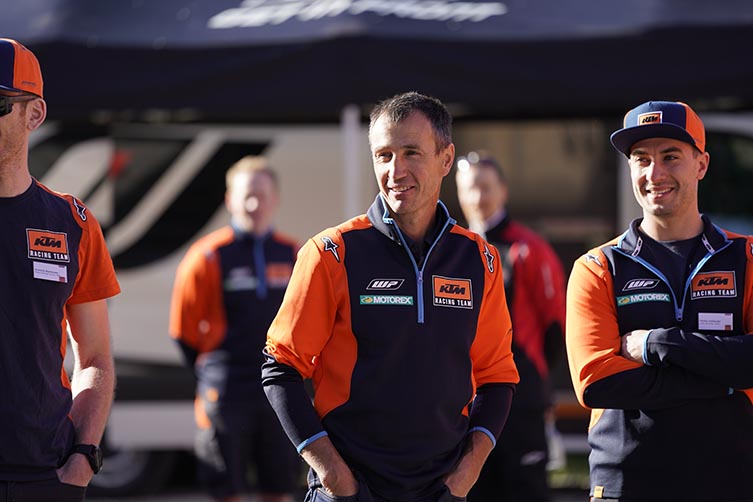
But where does Rupi think KTM’s 2020 enduro models have most improved on their predecessors? Has there been a material philosophy shift in the bikes’ design? What challenges did his team encounter while developing the 2020 range? And what are some of the interesting R&D stories behind the final machines that were unveiled to the world’s media a month ago in Spain? We sat down with Rupi at the Spanish launch and got this fascinating insight into the new range’s design process.
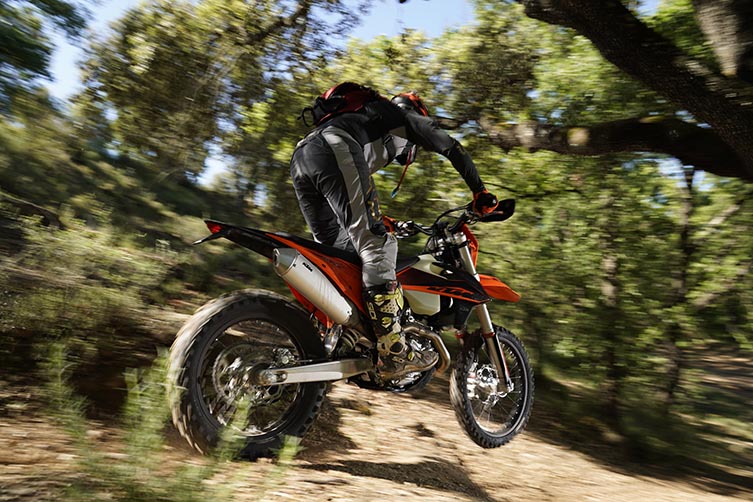
TM: Back in 2012, KTM first spoke about the chromoly frame being designed as an added damping member to assist the suspension, and you’ve added longitudinal flex to the frames several times since. But for 2020, the frames have been made more rigid in both torsional and longitudinal planes. Explain why.
RW: The short answer is that this is the direction our extensive testing has steered us in. We literally tested new frames every week for the 2020 models, and we continue to do so for future year-models. You’re correct in saying that this is the first time in many years that we have made the frames stiffer. After testing about 15 versions of the frame, we came to understand that we had gone a little too flexible in the past. But we didn’t make the entire 2020 frame more rigid; we specifically added more rigidity in two directions: torsionally and longitudinally. And this was not a big step; we only made it subtly stiffer for 2020. The goal was to get create a more confident front wheel feeling for the rider. As always, the frame changes were not made in isolation; they were made in conjunction with the changes to the suspension and chassis balance and ergonomics. We are confident that we’ve found an overall solution that, compared with previous models, makes the handling more balanced and forgiving, and yet helps the bikes steer more precisely.
![]()
“After testing about 15 versions of the frame, we came to understand that we had gone a little too flexible in the past. So for 2020, we subtly added rigidity specifically in two directions: torsionally and longitudinally.”
![]()
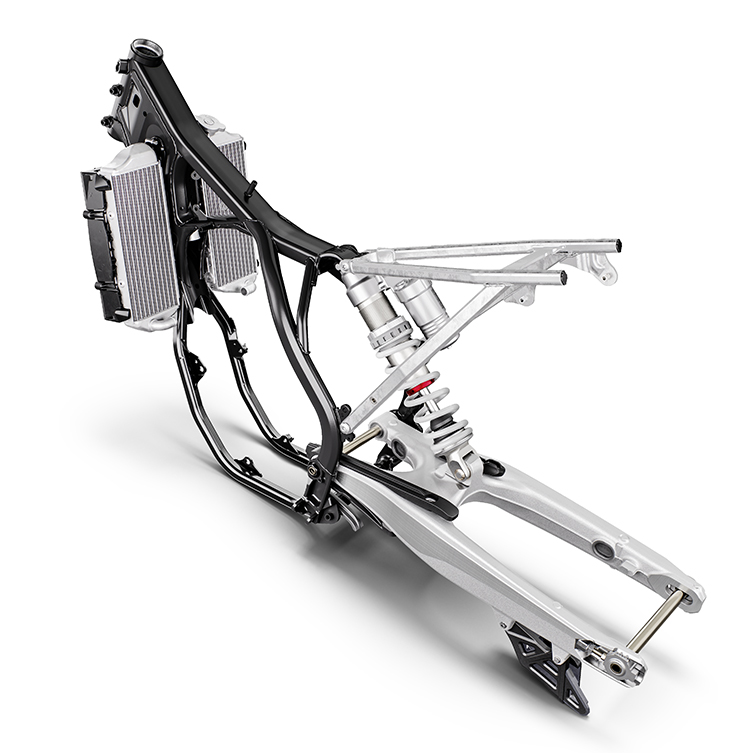
And despite testing all those versions of the frame, you retained the same frame geometry for 2020, right?
Yes, we did. We were very confident that we already had the geometry right, so the different versions of the frames we tested varied mainly in their flex characteristics. Similarly, we did not change the triple clamps for 2020.
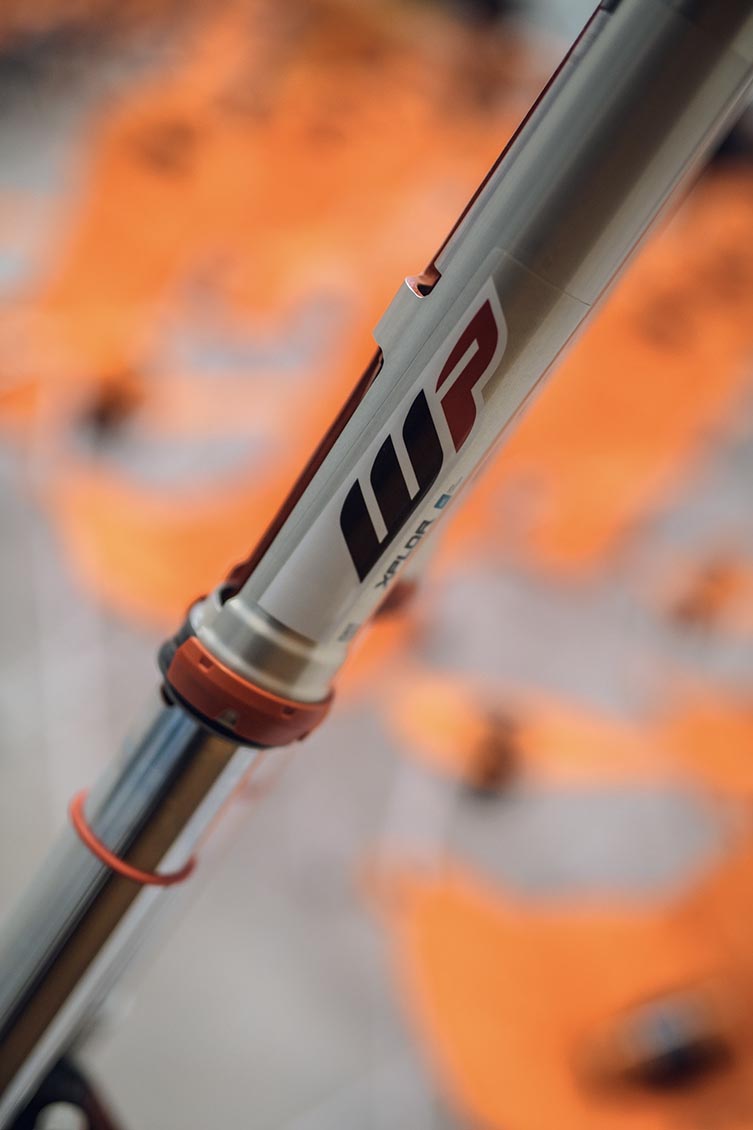
Would you say that the changes to the WP Xplor fork’s set-up are significant for 2020?
Yes. We have some hardware changes in the WP Xplor fork and different settings with both the springs and damping. Internally, we have updated the mid-valve piston so its tolerances are more precise, and this is to ensure a much more consistent damping action. We also changed the fork’s screw-cap adjuster – which comes standard on the Six Days models – so it doesn’t get stuck like it did occasionally in the past. Plus, we have added the stroke indicator ring on all the chrome fork sliders. I really like this ring because it serves another purpose: it also helps clean the chrome tubing.
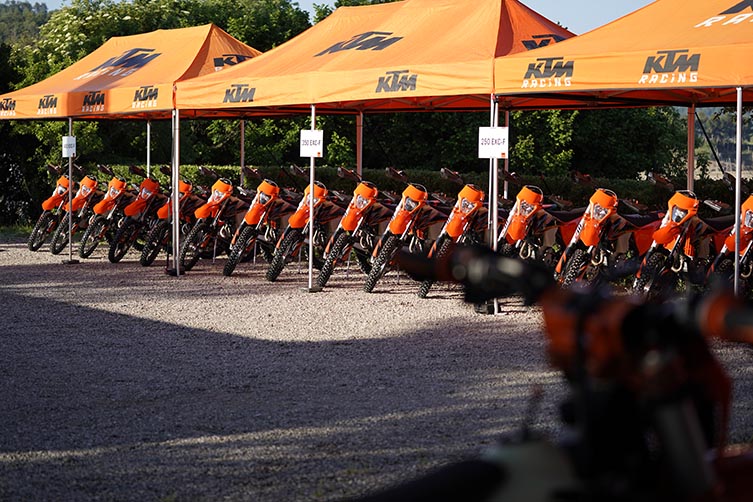
And the changes to the Xplor fork’s spring rates and damping represent quite a shift in set-up thinking, right?
Yes, it is a very different ‘style’ of set-up in the fork for 2020 because we are using softer springs and significantly firmer compression damping to create a slightly firmer overall feel. In other words, we are relying less on the spring to hold the fork up in its stroke, and more on the fork’s damping. There is no change to the springs used in each model’s PDS shock absorber, but we have changed the damping settings. Basically, the shock’s low-speed damping is softer and the high-speed damping is firmer. In addition, we have changed the design of the shock’s second piston and introduced a sealed cup to assist with bottoming resistance. The extra O-ring in this cup avoids the oil bypass issue we had on the previous shock, and that is largely responsible for the added bottoming resistance.
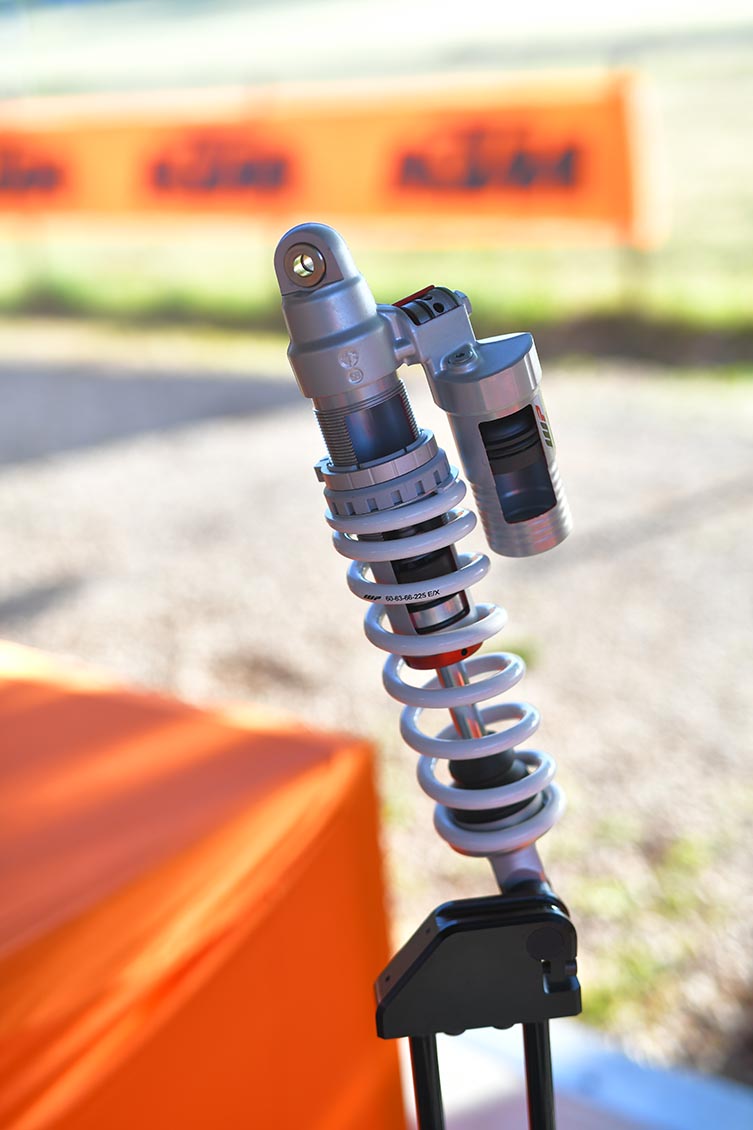
You’ve said that the new settings were preferred by experienced test riders and in extreme terrain, but do they come at the expense of feel for average trailriders?
Well, extreme riding is more and more popular and there has been a trend for enduro to get more extreme in recent years. It’s true that our test riders found these new settings allowed them to preload and squat the suspension better to help clear extreme-terrain obstacles. But less experienced riders also found these settings were better for general trailriding, at slow and fast speeds. So it was a win-win for us. I think the overall feel of the ride is a bit firmer for 2020. It’s difficult to keep everyone happy because these bikes are used by such a wide range of riders. But I think the new settings will be well received because, in the past, we have had complaints that the suspension, especially the fork, has been a little on the soft side.
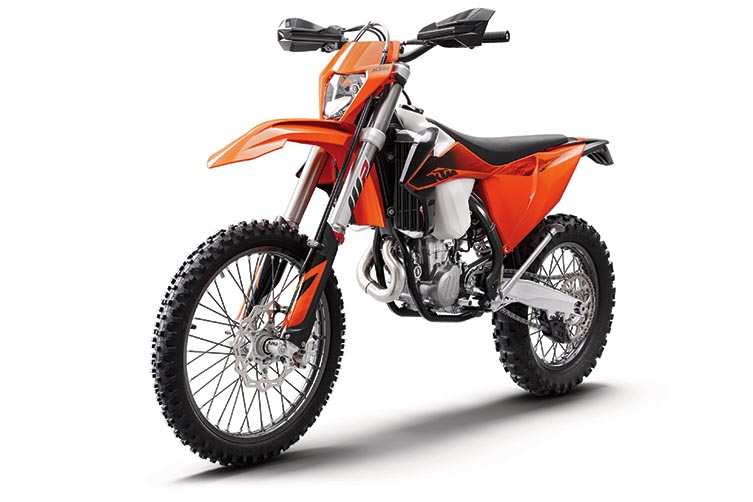
![]()
“The new ambient air pressure sensor is a real highlight on the 2020 two-strokes because it lets the bikes adjust to different altitudes much quicker and more precisely than their predecessors did.”
![]()
Take us through the process of developing the bikes’ bodywork and seat, which are both much different for 2020.
Well, the changes to the bodywork and the seat were first seen one year ago on the 2019 motocross models, but from a design perspective, we developed those changes to the plastics and seat at the same time. We actually start the process with a bike made from clay, working in collaboration with Kiska. We took feedback from a huge cross-section of riders – from enduro, motocross and extreme backgrounds – to improve the rider contact points with the bike and allow optimal movement and feel. I would say the biggest change is how much slimmer the 2020 bikes are through their rear-ends. Even though our motocross bikes got this shape one year ago, it was a change made primarily for enduro.
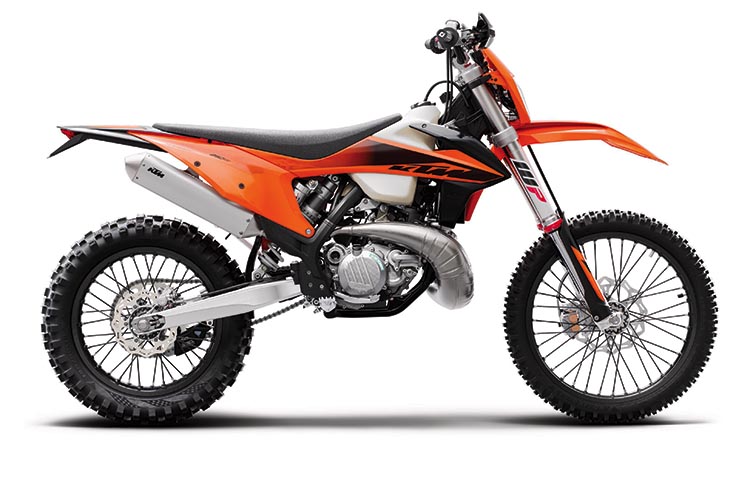
And the seat mods were also critical to that ‘rider interface’ your team often refers to, right?
That’s right. Seat comfort was a big goal for us for both the motocross and enduro models. We kept the line of the seat the same for 2020, and this is the same as what’s used on our motocross bikes. But the foam we use on the enduro models is slightly softer. We’ve retained what we call the ‘asphalt’ seat cover because it is proven to offer a fantastic combination of grip and comfort.
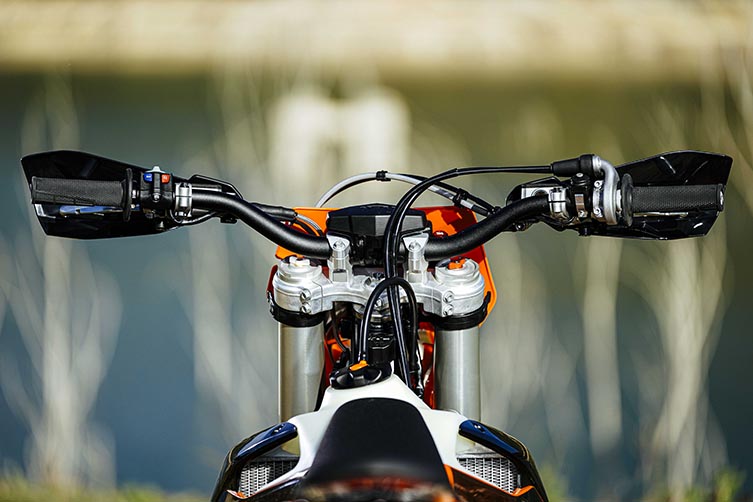
And has the seat-to-handlebar relationship changed?
No. Riders all seem to notice the extra room under the handlebars on the 2020 bikes, and this is a result of us moving the radiators and radiator shrouds 12mm lower. This gives your legs more room, especially in tight corners. The fuel tank is a slightly different shape for 2020, but the measurement between the seat and handlebars remains unchanged from their predecessors.
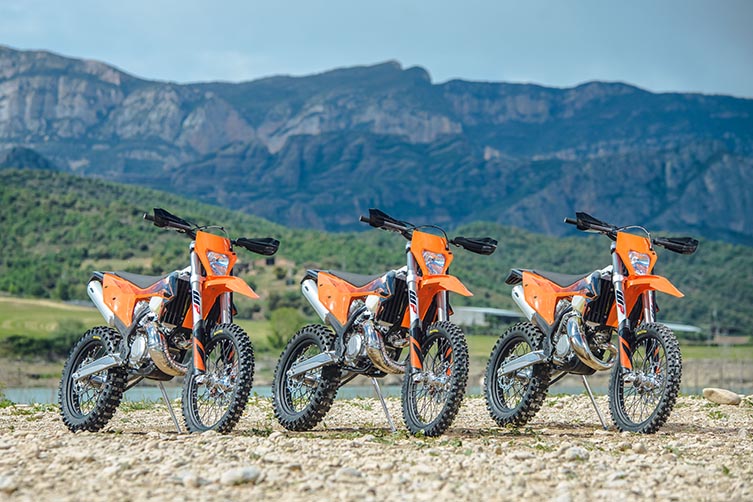
With the early TPI two-strokes, there were some issues with the oil tank splitting. How have you addressed this?
This problem was isolated to the very early TPI bikes produced, and we solved it by moving to a new plastic material. For 2020, we have gone a step further from a reliability point of view by introducing a flexible mounting point. This is designed to insulate the tank against being affected by major frame flex or vibration. The shape has also been modified slightly and, at 600ml, its capacity is a bit less. But experience with the TPI models has taught us that this is more than enough because you can go through seven or eight fuel tanks before having the fill the oil tank. We’ve also added a mesh screen as a precaution against dirt getting into the oil pump, and this can be removed to clean if necessary.
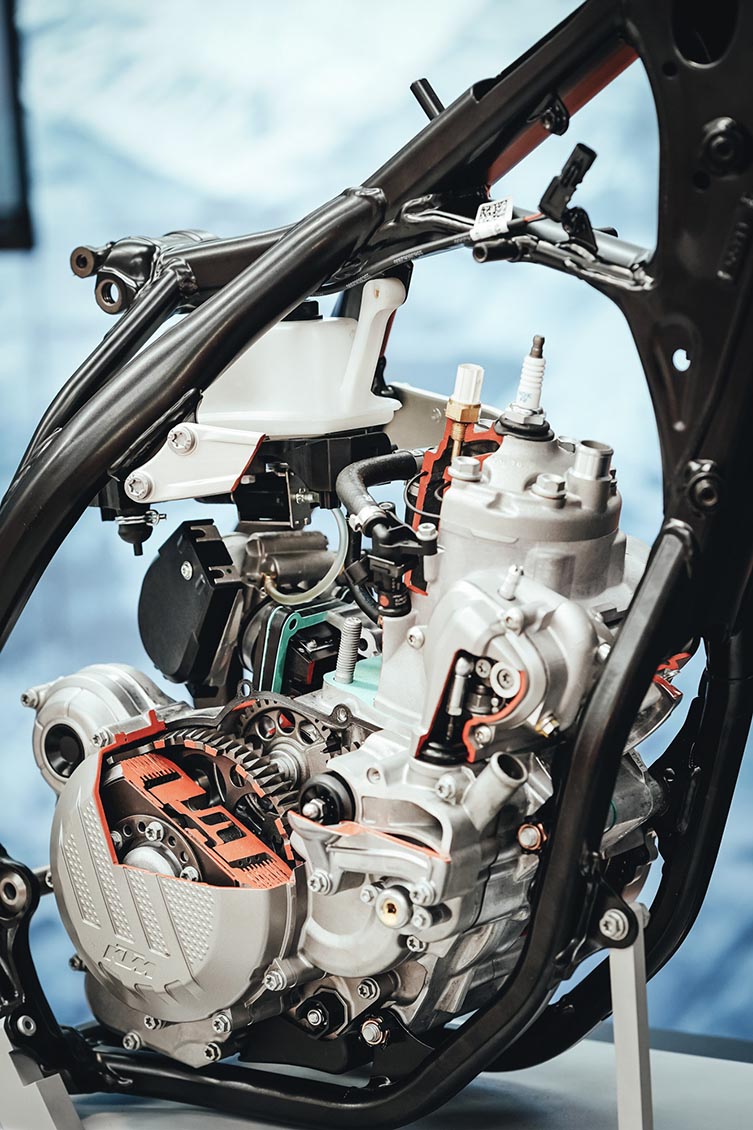
Speaking of the two-strokes, explain how the new ambient air pressure sensor works, and how it improves the bikes’ performance.
I would say that the new ambient air pressure sensor is a real highlight on the 2020 two-strokes because it lets the bikes adjust to different altitudes much quicker and more precisely than their predecessors did. With the 2018 and 2019 TPI bikes, the only air pressure sensor the system used was the crankcase pressure sensor, and this was not always an accurate way to calculate the ambient air pressure. Adding the second, dedicated sensor makes the system much more sophisticated and responsive.
![]()
“We are confident that we’ve found an overall chassis solution that, compared with previous models, makes the handling more balanced and forgiving, and yet helps the bikes steer more precisely.”
![]()
It feels like there’s a larger difference between Map 1 and Map 2 (using the optional Map Selector Switch) on the 2020 two-strokes. Is there?
Yes. Our goal was to make the difference big enough for riders to notice, because that will motivate them to use it to suit varying terrain. The way we look at is that Map 1 – the ‘standard map’ – is made for cross-country riding, while Map 2 – the ‘traction map’ – is more suited to enduro.
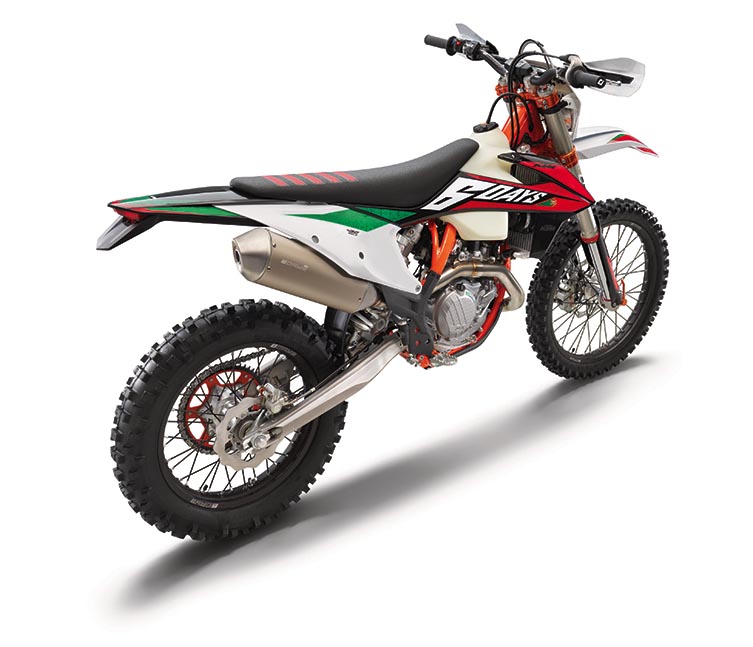
A lot of major upgrades were introduced on these 2020 models, but are there any other key mods that have been overshadowed; smaller mods you think still deserve a mention?
Lot’s of them [laughs], but there’s only so much we can talk about at a media launch. For me, I think the new spoke nipples are a notable upgrade because it has solved the issue with spokes working loose too much in the past. The nipples are now machined so they’re a more precise fit with the rim, which means they don’t require tightening as often. I also think the new frameguards are worth mentioning. In addition to the fact they now cover the frame and rear brake master cylinder, the new texture they use gives the rider’s boots better grip on the bike. This contact point is critical for the rider to have good control and feel for the bike.
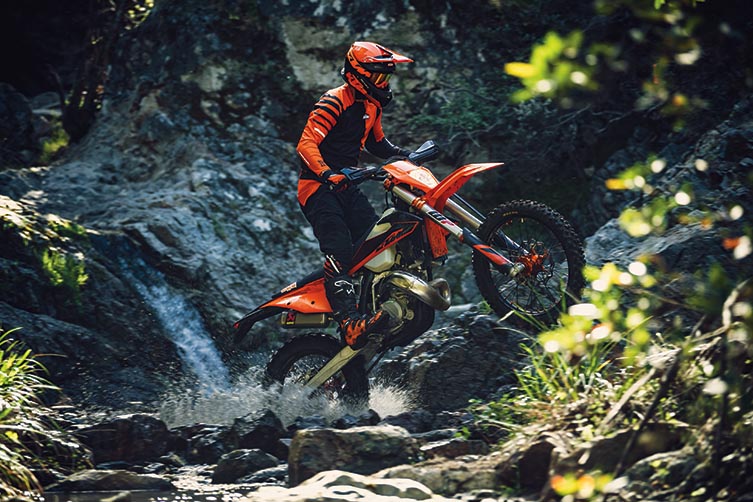
When you look back at your time at KTM – first as a test rider, then as a Team Leader for KTM’s off-road test program, and now as Head of the Enduro Platform – how gratifying is it to see how far the enduro models have come?
It has been a very satisfying time for me. These days, I spend less time testing the bikes and giving feedback, and more time in the factory coordinating the overall development process. In a way, I miss testing the bikes all the time. But as I get older and less fit [laughs], it makes sense that I rely much more on my test riders, and my job is to ensure we take the bikes in the right direction. With a new generation of bikes – like these 2020 models – we have worked for three or four years on them, so we really look forward to presenting the bikes and getting independent feedback on what we have achieved. And I’m happy to say that the feedback from all the journalists here at the international launch has been really positive. Of course, now our hope is that consumers around the world feel the same way.
More On the 2020 KTM EXC Range

KTM’S 2020 EXC ENDURO RANGE: IN CONTEXT
🎥 TESTED: KTM’S 2020 EXC ENDURO RANGE
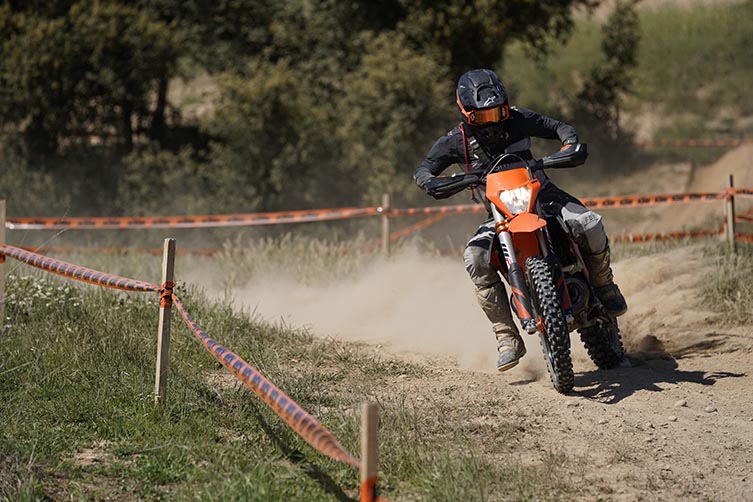
TESTED: KTM’S 2020 ENDURO RANGE

KTM’S 2020 EXC RANGE: OBSERVATIONS
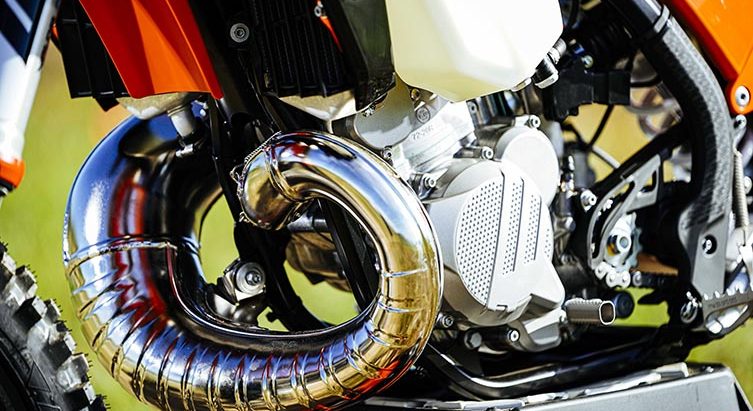


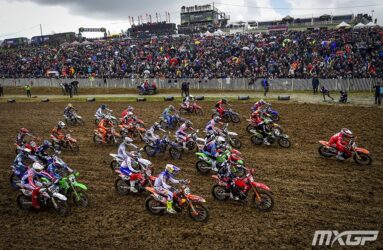


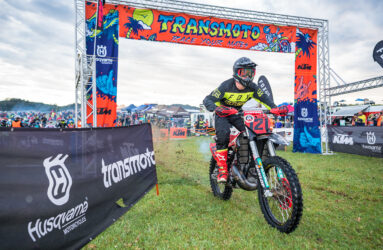


Be the first to comment...